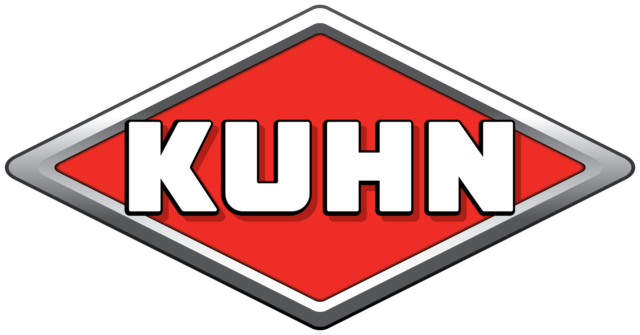Dairy farmers are interested in producing higher levels of milk solids, as most U.S. markets are valued or priced based on pounds of milkfat, pounds of true protein (does not include milk urea nitrogen contributions) and other solids (lactose and minerals).
One recommended guideline is over 6 pounds per cow per day of combined pounds of fat and true protein. Several considerations will be discussed in this column.
Interest in milkfat
Butter in the U.S. continues to establish milk price rewards for herds that produce milkfat percentages above breed average (Table 1) along with higher milk volume.
 Summarized from dairy breed organizations (Table 2) in 2017, Holstein herds significantly increased milkfat content (3.84 percent) over traditional fat percent values (3.7 percent).
Summarized from dairy breed organizations (Table 2) in 2017, Holstein herds significantly increased milkfat content (3.84 percent) over traditional fat percent values (3.7 percent).

Other breeds did not shift milk components significantly in 2017.
Sources of milkfat
Approximately 50 percent of milkfat is synthesized by the mammary gland (called de novo synthesis) from two rumen-volatile fatty acids (VFAs) – acetic acid and butyric acids. Neutral detergent fiber and non-fiber carbohydrates (starch and sugar) are metabolized by the rumen microbes to VFAs.
These VFAs are used as energy sources by the cow, including the production of milkfat. The remaining 50 percent of the milkfat is from preformed fatty acid sources.
- Ration fat and oil sources can be corn oil from corn grain or corn silage, oil seeds such as soybeans or fuzzy cottonseed, or fatty acids such as palmitic or linoleic fatty acids, which may be rumen-protected.
- Body fat mobilized in early lactation as non-esterified fatty acids
- Fatty acids synthesized by rumen microbes
Feeding considerations
To maximize production of VFAs by rumen microbes, optimize dry matter intake containing fermentable carbohydrates. Feeding digestible neutral detergent fiber from high-quality forages or byproduct feeds can increase acetic and butyrate production.
Raising starch levels to 28 to 30 percent of ration dry matter can increase acetic, propionic and butyric acids. If the rumen pH and environment are not optimal, propionic acid levels can increase while acetic acid levels decline, leading to rumen acidosis or subacute rumen acidosis. Besides producing a lower level of acetic acid, total VFA production can also be lowered, reducing available energy when subacute rumen acidosis is occurring.
Sugar levels can be increased to 5 to 7 percent of the total ration dry matter. (Most rations contain 2 to 3 percent sugar from feed ingredients.) Adding fats and oils can also increase milkfat content and yield. Increasing fat levels from 2 to 3 percent to 5 to 6 percent of the total ration dry matter can be considered.
The added fat sources can be oil seeds, animal fat sources and fatty acids (including rumen-inert fatty acids). When considering the source of added fat, price per unit of energy, the degree of saturation and unsaturation, and need for supplemental energy for the cow should be considered. Added fatty acids can also improve fertility and maintain body condition score along with increased milk yield and high milkfat test.
New research
Cornell University, along with Miner Institute, has developed a commercial milkfat test that can determine the percent and level of fatty acids from de novo synthesis (from rumen VFAs) and preformed fatty acid sources (from feed and bodyweight loss). This test allows dairy farmers to determine whether optimum levels of fatty acids are produced from VFAs or preformed fatty acid sources.
Michigan State University has determined palmitic fatty acid (16 carbon-saturated fatty acid) can increase milkfat test compared to other fatty acid sources. Michigan State researchers also reported adding oleic fatty acid (18 carbon-unsaturated fatty acid with one double bond) along with palmitic fatty acid may increase fatty acid digestibility.
If raw or heat-treated soybean seeds are processed too fine, polyunsaturated fatty acids can have a negative impact on rumen fermentation, reducing dry matter digestion and shifting VFA patterns. Pelleting cottonseed can have similar negative rumen effects.
Interest in true milk protein
Milk protein has been valued higher than milkfat in previous years. In the U.S., payment is based on true protein content, which includes casein and whey protein. Milk urea nitrogen has no value for consumers (not a source of amino acids) or milk processors (does not increase cheese production).
Dairy cattle do not have a crude protein requirement; they have amino acid requirements. In the future, animal protein, including milk protein, may have higher consumer value in their diets.
Sources of milk protein
The mammary gland synthesizes milk protein (casein and whey proteins) from amino acids. To optimize true milk protein yield, the amount and balance of amino acids are important. Two sources of amino acids are available to dairy cows.
- Microbial protein can provide 50 to 70 percent of needed amino acids depending on the level of milk production. The yield of microbial protein is related to organic matter digestibility that reflects dry matter intake, feed quality or nutrient digestibility. Microbial amino acids are ideal with the ratio of amino acid similar to milk protein and body protein or muscle.
- Rumen-undegraded protein (RUP) is the portion of feed protein consumed by the cow that does not degrade in the rumen. RUP can provide 30 to 50 percent of the amino acids needed and varies depending on the feed ingredient crude protein content, degradation of crude protein and digestibility of the protein in the small intestine. The amino acid profile of the RUP will reflect the feed ingredient source and amino acids degraded by rumen bacteria.
Feeding considerations
To increase true milk protein content, optimal dry matter intake with digestible feed ingredients is needed for microbial protein production. Corn silage as a forage source can improve true milk protein yield compared to legume and grass forages, as the starch is a source of rumen-fermentable energy that captures more of the rumen ammonia along with lower crude protein content of corn silage.
Select feed ingredients that have the desired RUP levels with needed amino acids. For example, soy and blood meals can enhance lysine levels; corn distillers grain can provide methionine. Urea can be fed if rumen ammonia levels are limiting microbial amino acid yield.
Milk urea nitrogen can be used as a tool to evaluate the optimal level and sources of protein in the diet along with rumen-fermentable carbohydrate to capture rumen ammonia. Target milk urea nitrogen levels between 8 to 12 milligrams per deciliter. A computer-modeling program (such as AMTP or Spartan III) can estimate the grams of amino acid delivered to the cow from RUP and microbial sources along with pounds of metabolizable protein provided.
New research
Balancing metabolizable protein levels can predict amino acids available to the cow for milk yield, true milk protein yield and other requirements for maintenance, growth and pregnancy. The optimal ratio of lysine to methionine has been lowered to 2.8 parts lysine to 1 part methionine. Histidine is also being evaluated as limiting amino acids in grass-based forage diets.
Methionine can also serve as a source of a methyl donor for fat utilization, immunity improvement and enhanced fertility. Commercial rumen-protected amino acids are available; check the grams of amino acids available to be absorbed in the small intestine.
Evaluating milk components during the lactation cycle
The North Carolina Dairy Herd Improvement (DHI) Processing Center summarized the level of milk components in Holstein herds at various levels of milk production and days in milk (Table 3).

A total of 1,998 herds were included in the 23,000-pound database; 292 herds in the 30,000-pound database. In early lactation (zero to 40 and 41 to 100 days in milk), the percent of milkfat and milk protein are reduced compared to the remainder of the lactation.
Higher-producing herds have higher components than average Holstein herds (23,000 pounds) in early lactation that may reflect higher-quality rations and improved feed intake. Higher milkfat test in zero to 40 days in milk may reflect excessive bodyweight loss. Lower concentration of milkfat and true milk protein in early lactation can be interpreted two ways.
- Dairy farmers have an opportunity to capture high milk income in early lactation cows if these cows’ percentages of fat and true protein are low.
- Nutritionist may explore why early lactation cows are below herd average such as transition rations and management, dry matter intake or added source of nutrients (such as rumen-protected amino acids or added fatty acids).
Bulk tank component averages can “hide” lower milk components in early lactation and increase metabolic risks. How does your herd compare? Milk components can be important in building your milk check and improve profitability during low milk prices. ![]()

-
Michael Hutjens
- Professor of Animal Sciences Emeritus
- University of Illinois – Urbana
- Email Michael Hutjens





